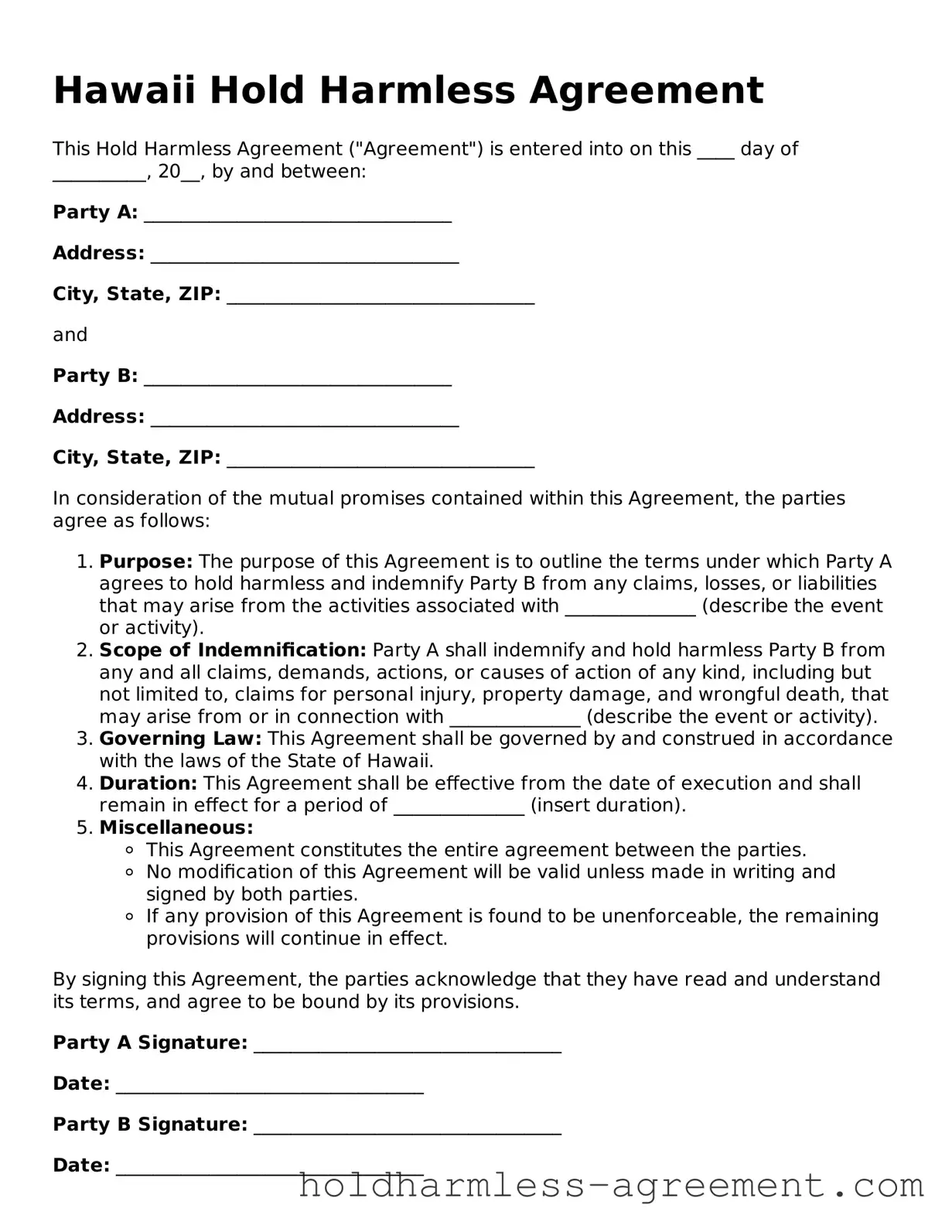What is a Hawaii Hold Harmless Agreement?
A Hawaii Hold Harmless Agreement is a legal document that protects one party from liability for any injuries or damages that may occur during a specific activity or event. This agreement typically involves two parties: one who is providing a service or space and another who is participating in an activity. By signing this document, the participant agrees not to hold the provider responsible for any accidents or injuries that may arise.
When should I use a Hold Harmless Agreement in Hawaii?
Consider using a Hold Harmless Agreement in various situations, such as:
-
Hosting events or gatherings, like parties or sports activities.
-
Renting out property or facilities for events.
-
Engaging in recreational activities that carry inherent risks, such as hiking, surfing, or boating.
By having this agreement in place, you can minimize the risk of potential legal disputes and ensure that all parties understand their responsibilities.
Who should sign the Hold Harmless Agreement?
Typically, the agreement should be signed by:
-
The party providing the service or facility (the indemnitor).
-
The party participating in the activity (the indemnitee).
Both parties must fully understand the terms of the agreement before signing. This ensures that everyone is aware of the risks involved and the protections offered by the document.
Is a Hold Harmless Agreement legally binding in Hawaii?
Yes, a Hold Harmless Agreement can be legally binding in Hawaii, provided it meets certain requirements. The agreement should be clear, specific, and voluntarily signed by both parties. It is essential to ensure that the terms do not violate public policy or contain any illegal provisions. Consulting with a legal professional can help ensure that your agreement is enforceable.
Can I modify a Hold Harmless Agreement?
Yes, you can modify a Hold Harmless Agreement to suit your specific needs. Changes can be made to the language, terms, or scope of the agreement. However, both parties must agree to these modifications, and it is advisable to document any changes in writing. This prevents misunderstandings and maintains clarity regarding the responsibilities of each party.
